- AUDIO ONE-TO-ONE Call Now: 210-805-9927
- Contact
- Register
- My Account
ANALOG ACCESSORIES
Analog Accessories
Over the past year, we’ve sampled many new and exciting analog-related products. Some qualify as tweaks and some I would use a stronger term to describe; indispensable! To those new findings, I’ll add some old favorites to round out the groups. Also, I’ll be preparing a separate product comparison page that can be updated as new accessories become available.
I’m grouping products into categories, making comparisons and allowing you to focus on a particular area you may want to address. Those are clamps and weight, mats, headshells, phono cables, and LP cleaning products (which will be discussed separately in another article).
I think we can all agree that our high-end audio hobby (affliction, habit, addiction, neuroses, etc.) is very subjective. What one person enjoys, irritates the next. There is/will never be one product that will please 100% of listeners. The complexity of an analog replay system further muddies the waters, making unanimity of opinion even more unlikely.
When comparing a single component, such an amplifier, preamplifier, DAC, etc., the variables are limited to external considerations; system components and the room itself. While those are exceptionally important, at least the item under consideration is a constant.
The analog playback system, on the other hand, is a particularly complex beast. Turntables are “systems” in and of themselves that employ multiple components, each interacting with one another. So many elements make up the turntable system that judging one specific part of the assemblage without considering the other constituents, is virtually impossible. Add to that the most influential variable of all, the phono cartridge, and you have a compilation of disparate elements that make consensus very, very difficult. So, with those caveats in mind, let’s wade into these treacherous waters.
RECORD INTERFACE -The record interface plays a pivotal role in defining the sonic character of an analog replay system. When designing a turntable, the engineer considers the mat (or lack thereof) a key ingredient and a significant contributor to the finished product. The wide variety of turntable designs, in turn, results in a range of interfaces, from textile, leather, cork or elastomeric materials to direct contact with a bare platter, each differs in the character they impart. Changing mats can result in rather dramatic differences in virtually every sonic category including tonality, dimensionality, and dynamics, among others.
So where do we start? The first step is deciding what you like about the sound of your turntable, and considering what you might want to change or enhance. The turntable itself will narrow the choices as some mats may not be appropriate due to weight or other considerations. Within the options available, speaking with your dealer or reading reviews can further focus the search.
Ultimately, as we’ve stated, and repeat, the subjective aspect makes an absolute recommendation impossible, but I’d like to share some of the more effective products we’ve tried.
- The least expensive option is a textile mat, which felt being the most common. Rega, Linn, and others recommend felt, and each has its own blend of fibers. If you are pleased with your turntable from either of those manufacturers, stick with it, but a number of our customers have found better performance replacing the felt with other mats. If staying with felt, I recommend replacing it occasionally. A new Rega felt mat would run you $35. Call to Order Note: A review by Malachi Lui, writing for Analog Planet, suggested the Pro-Ject felt mat outperformed the Rega mat on his Rega turntable. I have not experimented with the Pro-Ject so I can’t comment. Call to Order
- The Funk Firm in the UK offers the Achromat. This product has been on the market for some years has a raft of loyal users. Available in both 3mm and 5mm thickness, we suggest the 5mm unless VTA (or spindle length) demands the thinner option. The Funk Firm offers an Achromat 1200 which has been dimensioned explicitly for the Technics SL-1200 Series turntables. To most ears, the Achromat 1200 will be a nice upgrade over the stock mat on their SL-1200GR and SL-1200G models. Excellent product and reasonably priced at $115. Achromat 1200
- Oswald’s Mills Audio believes graphite is an ideal material for an LP interface, and listening to their mat on our Technics SL-1000R I’d have to agree. The OMA mat adds life and light to the sound that results in improved clarity and speedier transients when compared to the stock Technics mat. The caution with the OMA mat is weight. Coming in at 1.5lbs, the OMA mat is heavy, so be sure your turntable is comfortable with the added weight. $465. OMA Graphite Mat
- A very unique and exciting interface comes from SteinMusic in Germany. Holger Stein has designed an interface utilizing a very special handmade paper from Japan that he then treats with a natural resin formulation. The result is a stiff paper with visible, irregular, fibers. Two versions are available, the Perfect Interface Signature (white in color) and Signature Carbon Signature (which is black). Both are very effective but have different sonic characters. The white has a warmer tonal balance, the black faster and more articulate. Stein Music Perfect Interface Signature is priced at $349; the Carbon Signature goes for $599. Call to Order
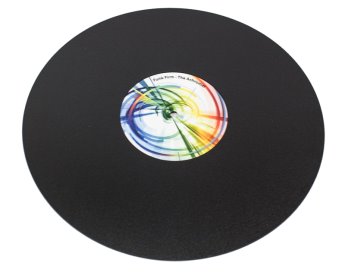
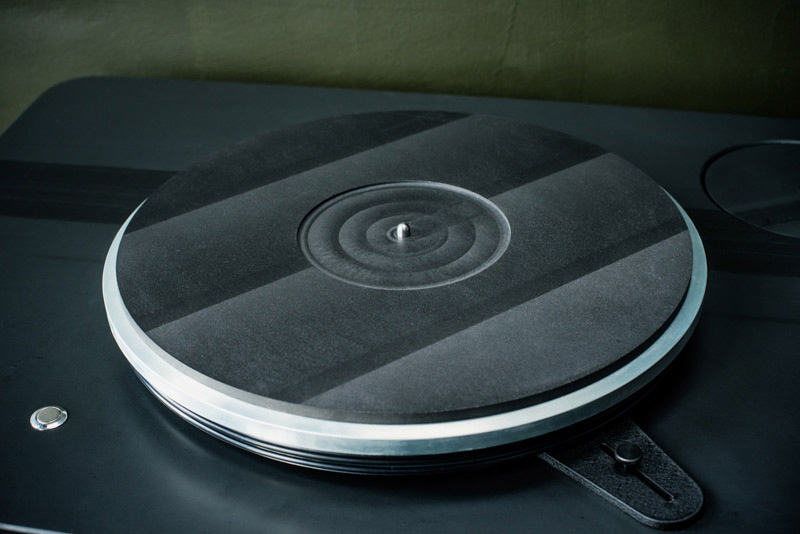
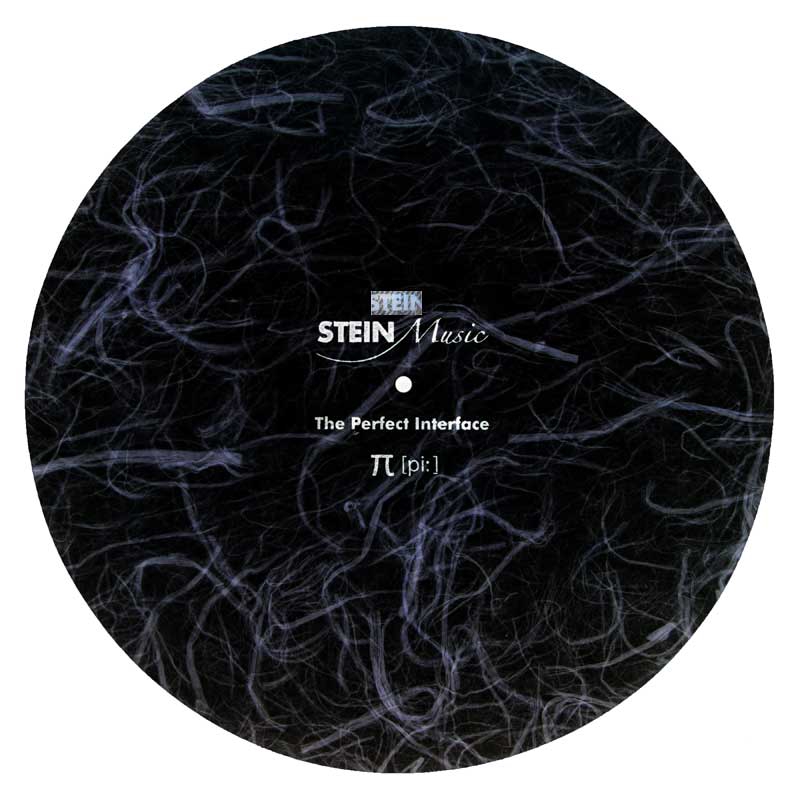
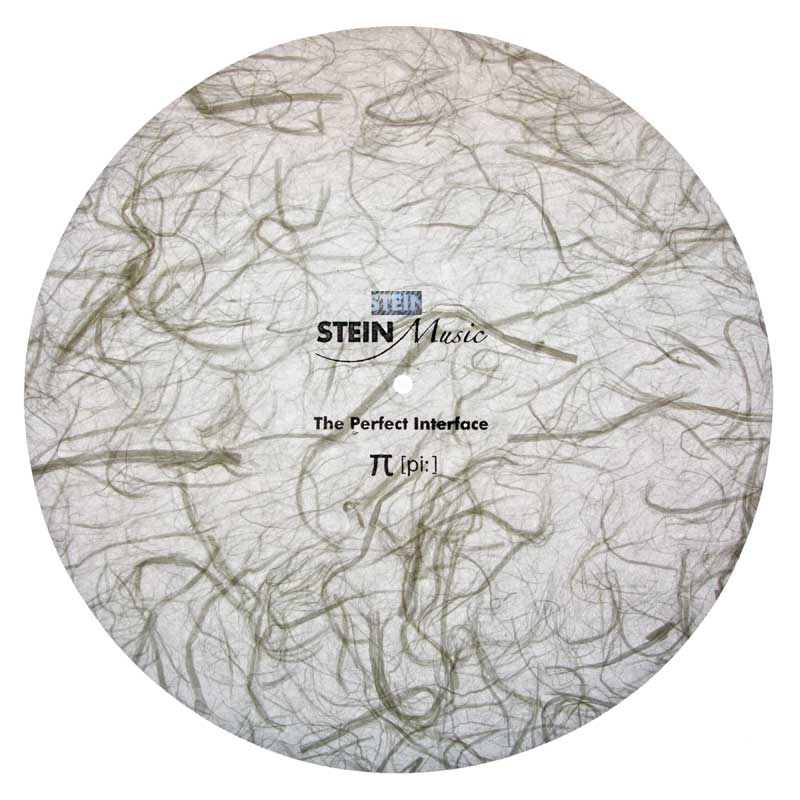
CLAMPS AND WEIGHTS -
The Problem - During the process of playing a record, minute vibrations are created in the vinyl as a result of the stylus tracing the groove. These vibrations, left untreated, can make their way back to the stylus, resulting in spurious output from the cartridge. The turntable platter and or mat are intended to damp the LP, reducing the errant vibrations. For the mat or platter to do their job, there must be intimate contact with the record. Compounding the problem is the fact that most records are not perfectly flat, making good contact with the mat or platter even more difficult. A record clamp or weight should tightly couple the record to the platter or mat. In doing so, the unwanted vibrations are more effectively transferred; therefore maximizing the damping offered by the platter and mat. On the surface then, it would seem like a clamp is a good idea, so let’s look at the options.
Solutions - There are many options for optimizing contact between the record and the mat.
- A simple record weight can be effective and is surely the most obvious way to achieve the goal. We would assume the heavier weight, the better, and that would be true if the turntable bearing could support the added weight, and the motor has enough torque not be affected by the added load. Further, if your turntable employs a suspension, it may need to be re-tuned due to the added weight. Due to those considerations, record weights cannot be considered a universal option.
- A more advanced version of a record weight is the LPI from Stillpoints. This device differs from a simple weight in that it uses active internal elements to quell vibration. It employs the same patented design used in the other Stillpoints products to absorb and dissipate vibration both from the record and spindle. Made from stainless steel, the LPI is also quite heavy (1 lb, 6 oz ), offering substantial clamping action in addition to damping vibration. This amount of mass, however, precludes its use on many turntables.
- Moving on to clamps we find a variety of options. There are a few designs that rely on friction to grip the spindle (the PIG clamp is an example of this design, though I'm not sure it is still available) and are usually made of rubber. These examples are not going to be able to provide much clamping force and thus may have little effect.
- Screw-down clamps require a threaded spindle. They can be quite effective and are generally considered as part of the initial turntable design and will usually be included with a model so constructed. VPI uses this system on a number of their turntables. One note of caution regarding screw-down clamps is that they are capable of exerting a tremendous amount of force, so don't overdo it.
- Some clamp designs employ an active collet mechanism that secures the clamp to the spindle. Turning a knob on top of the clamp tightens the collet around the spindle to firmly lock it in place. Apply a bit of downward pressure is applied to mate the record to the platter or mat and a twist the knob maintains that force. A good example of that design comes from Michell. A more advanced mechanism is the reflex clamp from Basis Audio. Here the mechanism both grabs the spindle while simultaneously pulling itself downward against the LP, applying some clamping pressure on its own. The advantage here is that less force is required by the user to establish adequate pressure. This may be an advantage on a turntable with a sprung suspension that limits the amount of downward force that can be applied to the platter.
- Heavy perimeter ring weights can also be useful, especially with regards to flattening records that exhibit edge-warp. VPI and Clearaudio make such products. The drawback is the cost and the extra steps involved with placing and removing the heavy ring (usually machined from stainless steel) for each play.
- Taking the concept of clamping to its ultimate conclusion is vacuum hold-down. Here the record is tightly coupled to the platter using a constant low-pressure vacuum maintained beneath the LP. Without question, this is the most effective way of ensuring a tight bond between the LP and mat or platter. It also has the significant advantage of applying equal force over the entire record, whereas a clamp can only apply force at the label area. The drawback is expense and complexity. Obviously, the turntable must be designed for vacuum clamping which involves a special platter and bearing with an air pathway and a special platter mat employing a resilient edge lip to preserve an air seal with the LP. Further, the external vacuum pump and necessary plumbing need to be considered along with the potential noise that some systems generate.
To clamp or not to clamp - Some turntable manufacturers have designed their products to be used without clamps, or they believe that clamps are either unnecessary or detrimental to performance. Rega and Linn are two that come to mind with this philosophy. That said, I’ve spoken with many listeners who feel that a good clamp improves the performance of these ‘tables. Our advice is to try one.
Here Are Our Picks in the Clamps and Weights Category:
- In the modest price range, the KAB Super Record Grip Mk II ($38) is a good buy. The design employs a two-piece molded frame with a spring rubber insert that grips the spindle.
- Made from Delrin, the clamp from J.A. Michell is a very lightweight design that will work on most any ‘table. The price is $59. JA Michell Record Clamp
- From VPI we like their Stainless-Steel Center Weight ($150). This super-simple design is effective simply due to its weight. It’s most often used with VPI ‘tables, but it can be used on other makes as well. It’s heavy at 28oz, so be sure that your turntable is comfortable the added weight. Call to Order
- There is a big jump in price up to my next recommendation. The Basis Reflex Clamp is, in my opinion, the most beautiful record clamp available. Precisely milled from a solid billet of aluminum, the Basis Reflex Clamp is a marvel of engineering, design, and execution. Just twist the top of the clamp to lock it into place on the spindle, tightly coupling the record to the platter, rotate the opposite direction to release. Unlike record weights (and many other clamps) the reflex action grabs the spindle and pulls the clamp down tightly against the record as you twist the top part of the clamp. Ingenious and very, very effective. $595. Basis Reflex Clamp
- A product unlike all the others in this roundup, the Stillpoints LPI Ultra LP Isolator combines prodigious weight (30oz) along with patented Stillpoints vibration absorption technology. The weight of the LPI seats the record against the mat/platter, while the ring of five isolators on the bottom reduce vibration by converting mechanical energy into heat. A great product, but sure your turntable is comfortable with the added weight. $549. Note: We are currently using the LPI with our Technics SL-1000R and are very pleased with the results. Stillpoints Ultra LP Isolator
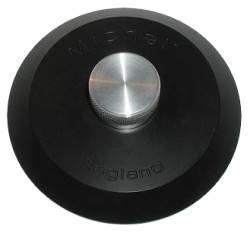
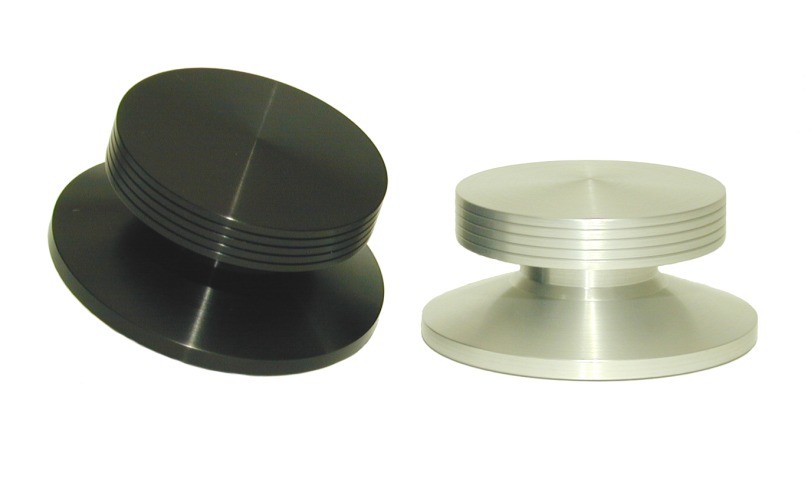
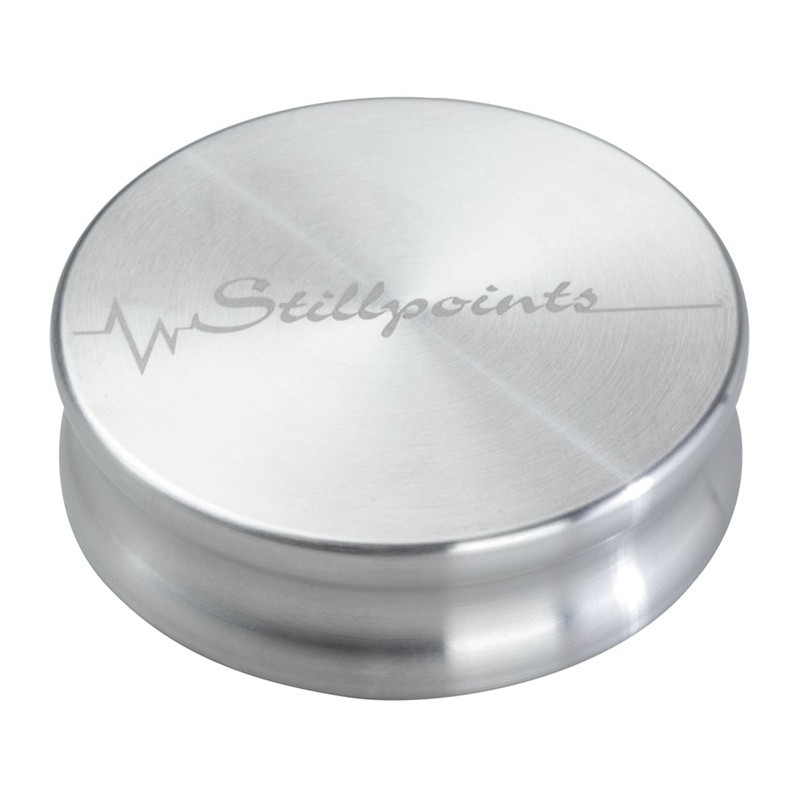
HEADSHELLS - As a result of the energy involved in playing a record some vibration of the cartridge body is inevitable. While some of those vibrations may be damped within the cartridge, at least some (if not most) are transmitted to the tonearm, the interface between the cartridge defines how the two interact and, ultimately affect the sound. Various aftermarket tweaks are available that allow some fine tuning of that interface (e.g., the hardware of different types such as brass, stainless, aluminum, etc.). Though most modern tonearms employ single-piece armwands, there is a resurgent interest in tonearms that utilize the so-called “universal” detachable headshell. Those arms offer the listener a greater ability to fine-tune the sound with the headshell they choose.
The new Technics turntables have been wildly popular here which has spurred our interest in evaluating detachable headshells. We’ve experimented with a number and will recount our findings here, but keep in mind that our experience is limited to trials on the Technics ‘tables (SL-1200GR, SL-1200G and SL-1000R).
- Ortofon offers a range of options priced from $36 to $629. We’ve found several that delivers excellent performance and value. Compared to most stock headshells (especially the lightweight headshell on the SL-1200G and GR models), the solid aluminum Ortofon LH-2000 ($89) offers a cost-effective step up performance. It’s relatively heavy though, at 15g, so be sure the total mass of the cartridge and headshell are appropriate for your tonearm. Made from carbon fiber, the LH-900 ($249) is our next pick in the Ortofon line. We’ve used this model on the SL-1200G and SL-1000R with good results. Weight is 16.8g. Call to Order
- The graphite headshell from Oswald’s Mill Audio in many ways compliments their graphite mat offering a similar sonic character – dynamic and extended. The company does not include or recommend a finger lift, but not many folks are willing to do without the convenience, so we’ve added a lightweight VPI finger lift. $465. OMA Graphite Headshell
- DS Audio, the Japanese company, noted for their outstanding optical pickups, offers the HS-001 headshell. Their unique design improves the mechanical coupling between the headshell and armtube (an obvious limitation to a detachable system). A “why didn’t someone think of this before” solution was to add a second locking pin and a special spherical washer at the mating junction. Together these features significantly enhance clamping force while ensuring uniform pressure on all the signal contacts. $450. DS Audio HS-001 Billet Headshell
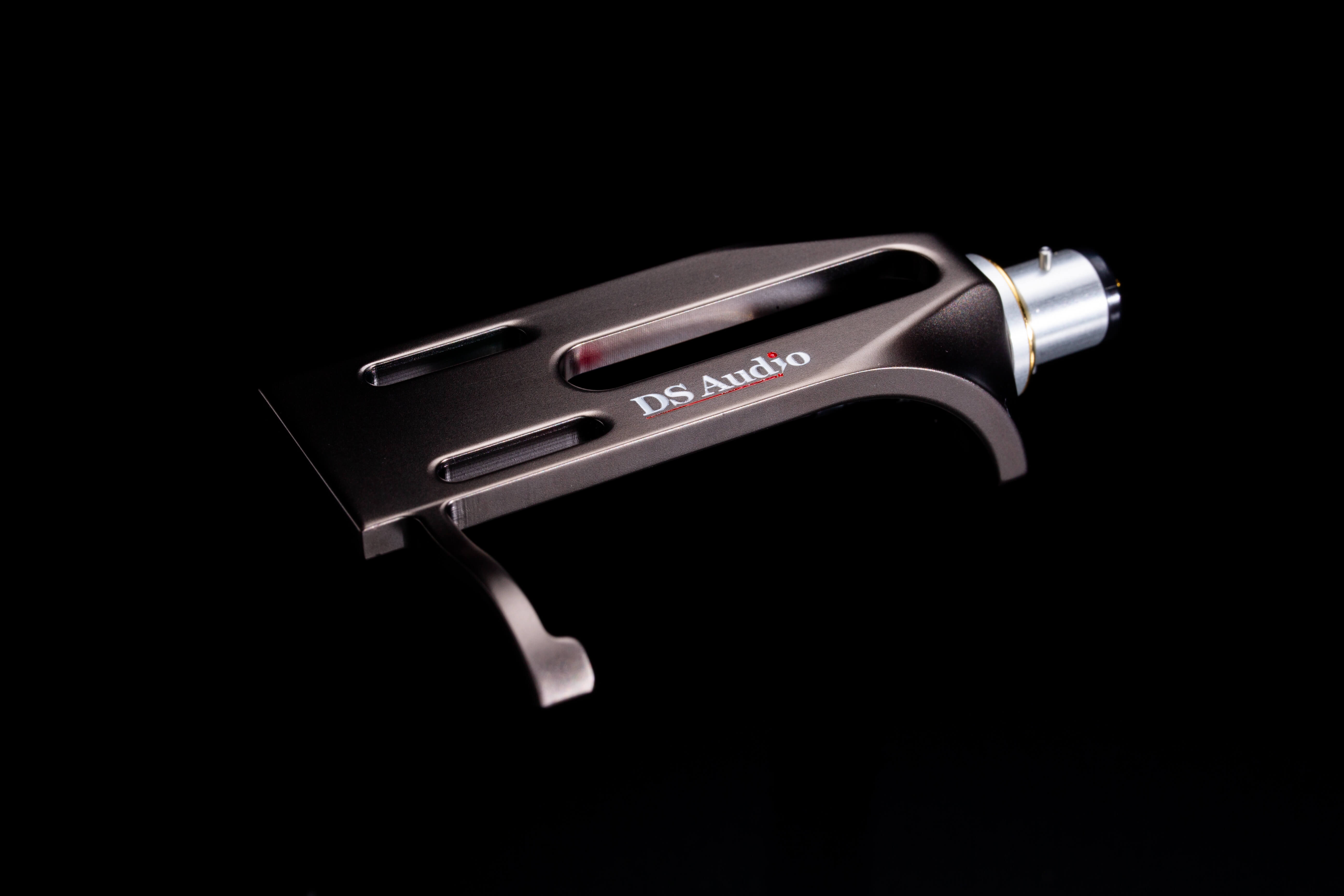
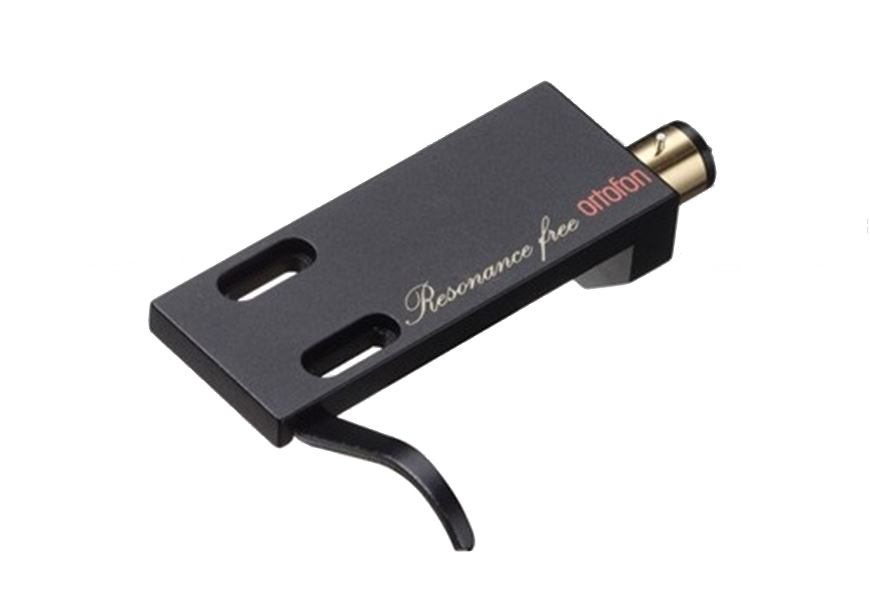
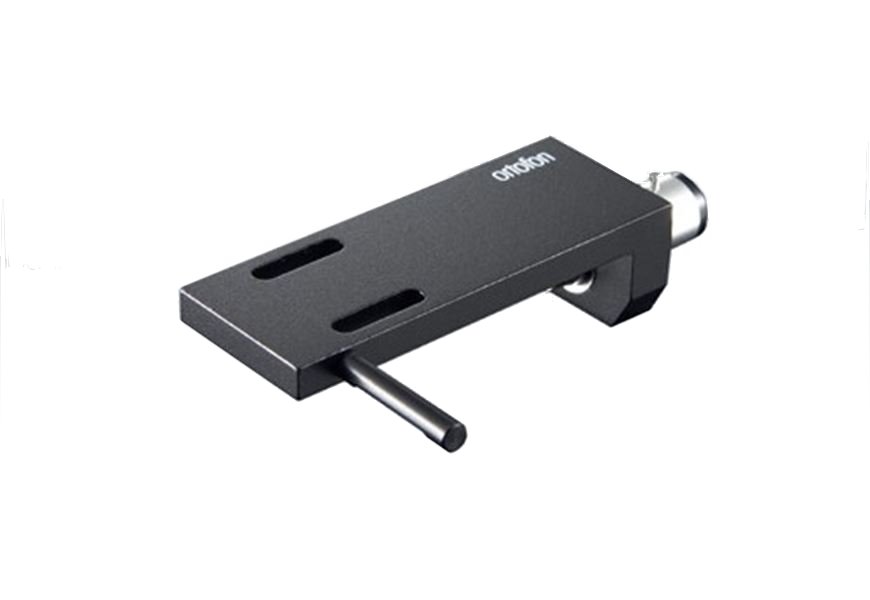
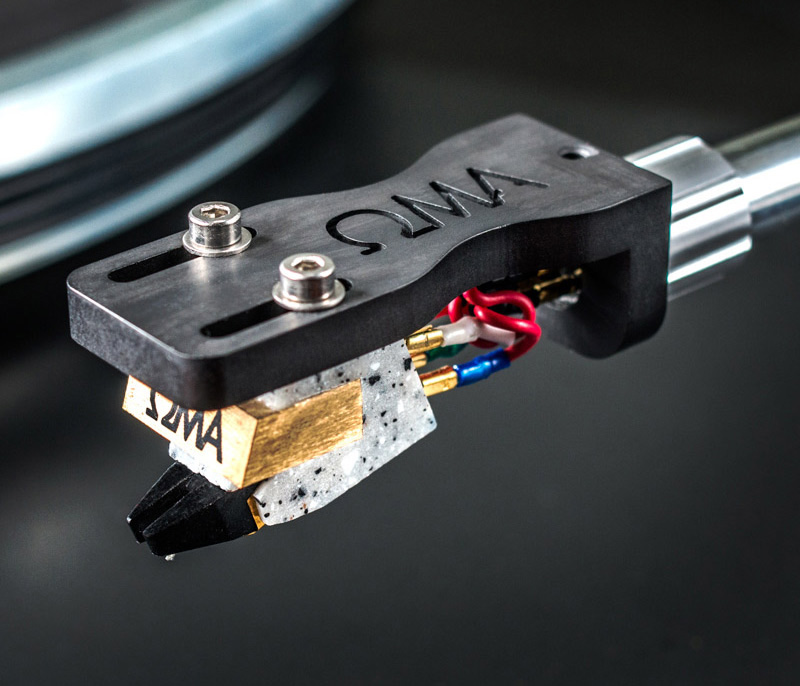
TONEARM CABLES – Oh, my, is this ever a can of worms! Anyone who has been in the hobby knows that cables are indeed a critical part of the signal chain, but also realizes there are so many variables that there will never be one cable that satisfies all listeners. Indeed, many of use cables to “fine tune” the tonal balance or a system, or choose one brand/model over another based on specific qualities or characteristics they hear in their setup (which may not be as apparent or important in another system).
The cables I will list here are by no means a registry of all the good options available – there are many. What I will focus on are cables that we have found to be good performers here and that have found acceptance among many of our customers.
What we value here in a phono cable is one that doesn’t impart a significant amount of its own character (let’s call that a neutral tonal balance), off good overall resolution and is well shielded to prevent noise pickup (a mandatory property for a cable carrying the very low-level output from a phono cartridge).
The listing is presented in alphabetical order and does not represent preference.
- Audience Au24SX – A relatively new inclusion for us, the Au24SX cable is less system dependent than previous versions. In the past, we found the Audience phono cables were great in some systems, not a good match in others (which we term system dependent), with somewhat unpredictable results. The “SE” and now the “SX” versions are much more “system-friendly,” so to speak. A 1M goes for $2162 in an RCA/RCA version, $2112 in DIN/RCA configuration. Call to Order
- Cardas Audio – Their selection of phono cables is broad, and each offers good value. Cardas Iridium is $210 for 1M; the Clear Cygnus is $440 1M, Clear sells for $1145 in a 1M length and top-of-the-line Clear Beyond is $1850, 1M. These prices reflect RCA/RCA termination, and all include a ground wire. Cardas charges an addition $60 for a right-angle DIN. Call to Order
- Shunyata – Well known for its superb power cables and line conditioners, Shunyata has not enjoyed the same level of name recognition when it comes to signal cables. That’s changing. We are very impressed with their current range of offerings and they gaining broad acceptance among our customers. Prices for 1M cables are: Venom - $400, Delta - $1300, Alpha - $2000, and the flagship Sigma (which uses some very exotic technology) is $4700. All Shunyata cables are hand-built, are cryogenically treated in-house and are run through a unique K-PIP process of pre-burn-in that dramatically reduces break-in time (a HUGE advantage as the break-in of a phono cable can be especially challenging due to the very low-level voltage output from the phono cartridge). Call to Order
- Wireworld – We’ve long been fans of Wireworld cables. They perform at a high level in virtually any system and offer exceptional value for money. In terms of tonal balance, these cables are neither bright nor warm, making them a neutral partner for most every system. Each model is available in RCA/RCA or DIN/RCA configuration, and a ground wire is included. In 1M lengths, the Solstice Series 8 is $200, Eclipse Series 8 is $400, Silver Eclipse Series 8 goes for $480, and Platinum Eclipse 8 is priced at $1100. Call to Order
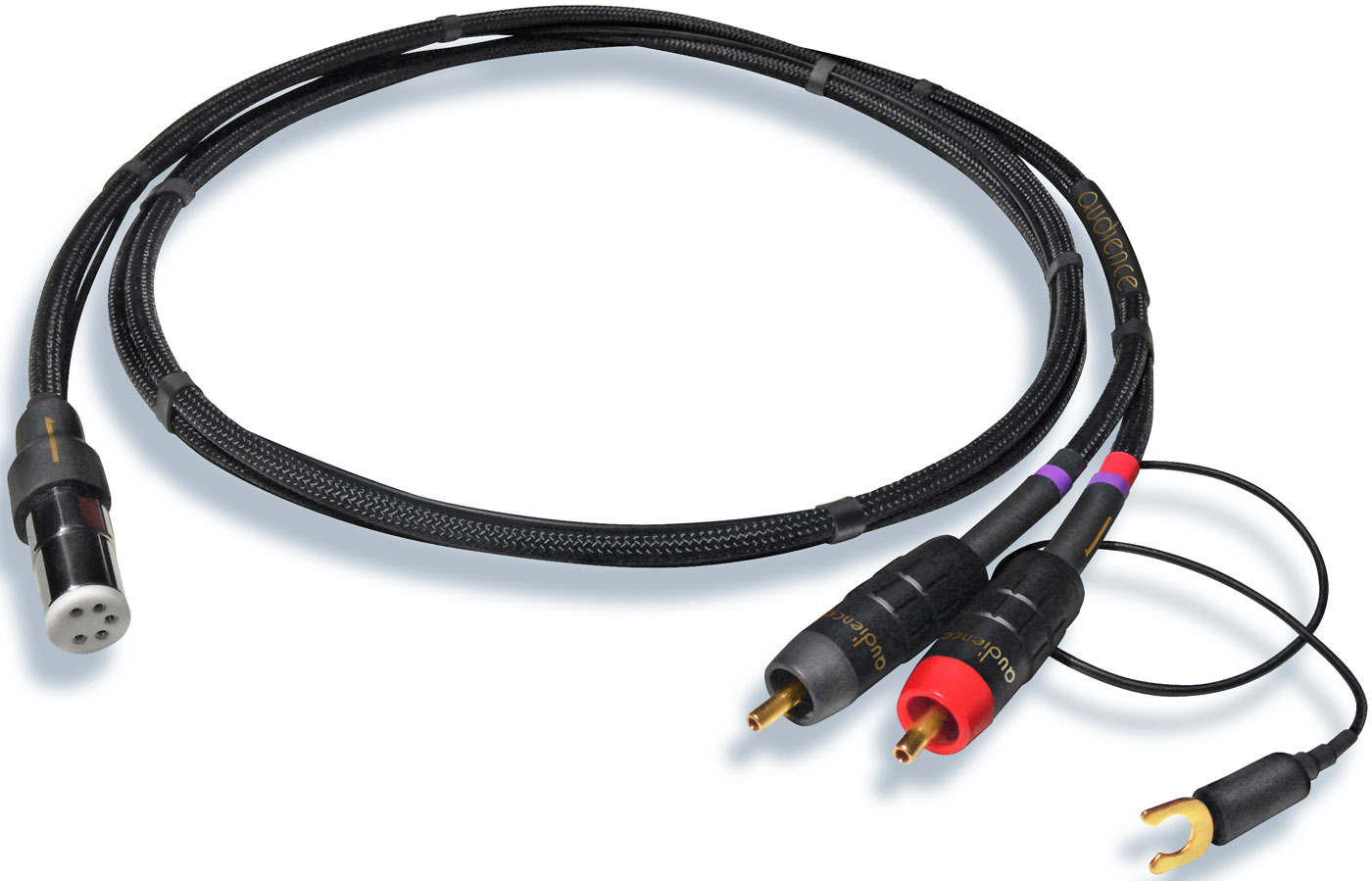
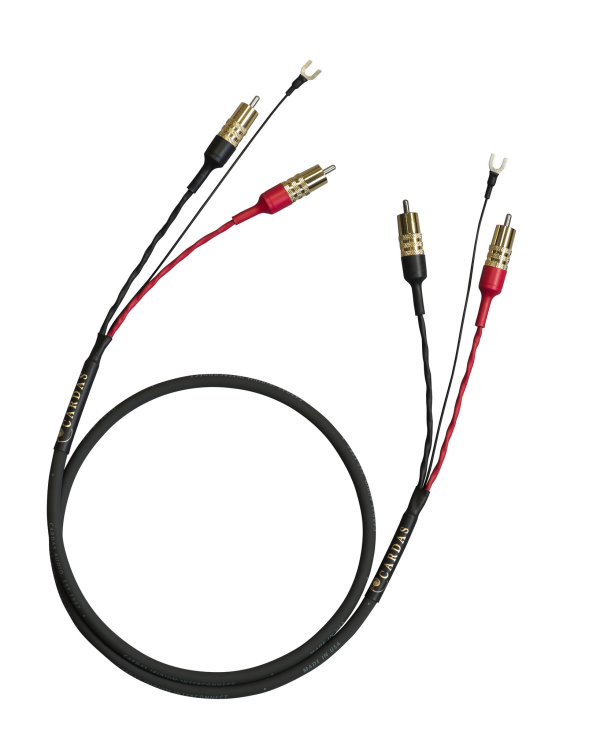
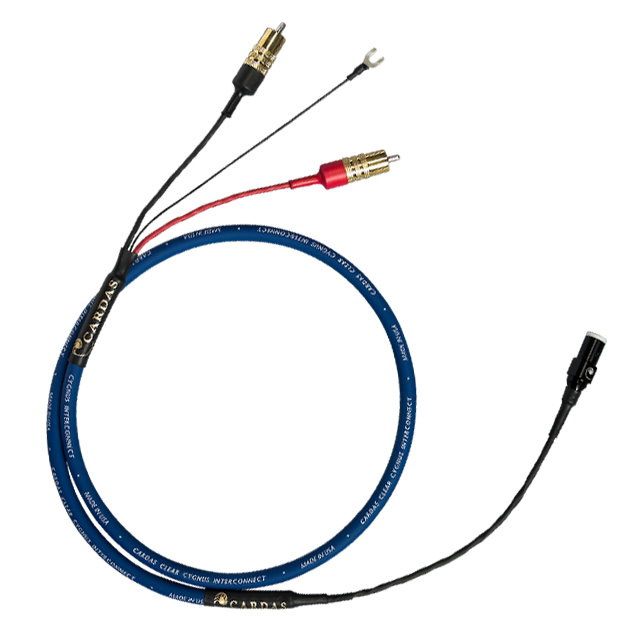
That’s a wrap, for now anyway. As new products emerge, we will be amending this text from time to time, so check back.
Lastly, please call us for help in assessing your particular system and finding the right product for you.

